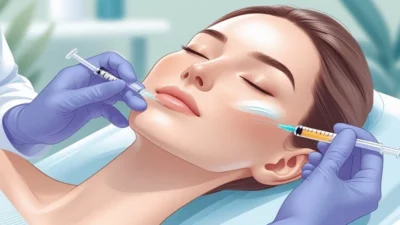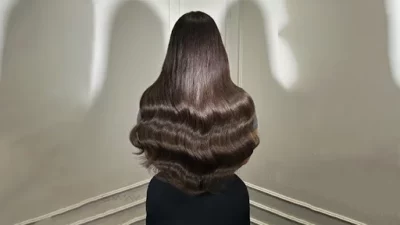The delicate skin around your eyes is often the first place to show signs of aging. Fine lines, puffiness, and drooping eyelids can sneak up on you no matter how meticulous you are with skincare. As advanced skincare technology continues to evolve, the Advanced Eyelid Anti-Aging Device has emerged as a powerful tool to fight these signs of aging without the need for invasive procedures. But with so many devices on the market, how do you choose the right one for your skin type?
Whether you have sensitive skin, oily skin, dry patches, or a combination of all three, choosing the right eyelid device can make all the difference in your results. In this guide, we’ll walk you through the most important considerations so you can confidently invest in a device that meets your unique needs.
Understand Your Skin Type First
Before diving into device specifications, you need to understand your skin type. The four basic categories are:
- Dry skin – tight-feeling, often flaky or dull.
- Oily skin – prone to shine, enlarged pores, and breakouts.
- Combination skin – dry in some areas (often cheeks) and oily in others (typically T-zone).
- Sensitive skin – reacts easily to products or environmental changes, showing redness, stinging, or itching.
Identifying your skin type is essential because certain devices may be too harsh for sensitive skin or too mild for oily, resilient skin. If you’re unsure, consult a dermatologist or perform a simple skin analysis at home by observing how your skin behaves after cleansing without any product.
Consider the Technology Used
Modern eyelid anti-aging devices employ various technologies—each with distinct benefits and compatibilities. Here’s how different technologies match with skin types:
1. Microcurrent Technology
Best for: All skin types, especially mature or dry skin
Microcurrent devices use low-level electrical currents to stimulate facial muscles and boost cellular activity. They’re gentle, non-invasive, and well-suited for dry or aging skin because they improve firmness and hydration without irritating the surface.
2. Radiofrequency (RF)
Best for: Normal to oily skin
RF energy penetrates deep into the skin to stimulate collagen and elastin production. It’s excellent for tightening sagging eyelids and reducing wrinkles. However, it may feel too intense for sensitive skin and could cause temporary redness. Always use with a conductive gel to reduce irritation.
3. LED Light Therapy
Best for: Sensitive, combination, or acne-prone skin
LED light therapy offers various wavelengths (red, blue, green, etc.) that target different concerns. Red light reduces wrinkles and inflammation, while blue light targets acne. It’s non-invasive and usually safe for all skin types, including sensitive skin.
4. Thermal or Heat-Based Devices
Best for: Dry or mature skin
Devices that use gentle heat help to improve blood circulation and product absorption. They are soothing and ideal for hydrating treatments but may cause mild irritation for extremely sensitive skin types if overused.
Look for Adjustable Intensity Levels
No two faces are alike, and neither is skin sensitivity. Devices with multiple intensity settings give you more control and allow gradual adaptation. Start with the lowest setting to test your skin’s response. This is particularly important for first-time users and those with sensitive or thin eyelid skin.
Check Material and Design
Look for hypoallergenic, medical-grade materials that are safe for direct contact with the skin. Silicone and stainless steel are common in high-quality eyelid devices. Ergonomic designs also matter—devices with contoured heads or smaller applicators allow better access to the eyelid area without pulling or stretching the skin.
Read Reviews by Skin Type
Don’t just look for high ratings—search for reviews by users with your same skin type or concerns. For example, if someone with sensitive skin raves about how gentle a device is, that’s a good sign. Likewise, if someone with oily skin finds a device too greasy or ineffective, take note.
Compatibility with Your Skincare Products
Your device will likely work best in conjunction with serums, creams, or gels—often included or recommended by the manufacturer. Make sure these products are suitable for your skin type. If you have oily or acne-prone skin, avoid heavy or comedogenic (pore-clogging) ingredients. For dry skin, seek out hydrating and barrier-repairing formulas like hyaluronic acid and ceramides.
Consider Battery Life and Portability
If you’re always on the go or prefer quick treatments, choose a device with a long battery life and a compact, travel-friendly design. The best device is the one you’ll consistently use, so ease of use and convenience should factor into your decision.
Don’t Skip the Patch Test
Even the most skin-friendly device can cause irritation if your skin is particularly reactive. Before using it fully, test the device on a small, discreet area near your eye to monitor any negative reactions.
Final Thoughts: Choose Smart, Treat Consistently
When it comes to choosing the best eyelid anti-aging device, there’s no one-size-fits-all answer. The key is understanding your skin’s unique needs and matching them to the right technology. Take your time to research, compare features, and evaluate how each device aligns with your skincare goals.
Consistency is equally important. Most anti-aging devices require regular use over weeks or months to show noticeable results. So once you’ve chosen your ideal tool, commit to using it as directed—and be patient. Your future self will thank you for investing in healthier, younger-looking eyes.

Lexy Summer is a talented writer with a deep passion for the art of language and storytelling. With a background in editing and content creation, Lexy has honed her skills in crafting clear, engaging, and grammatically flawless writing.



